Best CMS for SEO
A content management system (CMS) is a software that simplifies the creation, management, and publication of digital content. It removes the need for advanced technical skills, meaning you don’t need to know how to code to build a website (but coding might be required for additional tweaks).
This article covers the distinguishing features that make a CMS SEO-friendly while providing an in-depth analysis of leading platforms in this area.
To begin exploring this topic, it’s helpful to determine the CMS used by the website you have in mind. Consider using our free CMS Detector to identify the technology behind your own website or analyze your competitors’ websites.
Key takeaways
- Here are some common goals users might have when choosing a CMS, and how different CMSs correspond with them:
- For blogging and content management: WordPress, Drupal, HubSpot CMS, Wix, Squarespace, GoDaddy Website Builder, Adobe Experience Manager.
- For ecommerce: Shopify, Opencart, Adobe Commerce.
- For customization and flexibility: Drupal, WordPress, Adobe Commerce.
- For security: Drupal.
SEO-friendly content management systems: Must-have features
There are plenty of other important CMS features for SEO, with some being crucial and others simply being nice to have. Let’s look at the key characteristics that a CMS should possess to effectively support your SEO.
Customizable page elements
Having customizable page elements, such as title tags, meta descriptions, and heading tags, is one of the most crucial features of an SEO-optimized CMS. This functionality allows you to tell search engines what the content of your website is about. This improves your website’s visibility in search results and attracts more organic traffic.
- Title and meta description
Title tags and meta descriptions are what users see in SERPs. They are crucial for generating clicks (click-through rate). An SEO-friendly CMS should allow you to customize these elements.
- Canonical tags
A good CMS should allow you to use canonical tags to tell search engines which version of a page to display in search results. This is important for avoiding duplicate content issues and ensuring that the correct version of the page is indexed.
- Alt text
Another page element that should be customizable in the CMS is the image alt attribute (a description of an image used by screen readers and search engines to understand what the image is about).
- URL settings
The CMS should also provide convenient options for customizing URL settings. URLs tell search engines and users what a page is about. It’s better to have sleek, human-readable URLs that incorporate relevant keywords while avoiding unnecessary parameters or numbers.
- Robots meta tag
The robots meta tag is another essential element. It should be easily customizable within your CMS, giving you control over how search engines interact with your content. You can prevent low-quality or duplicate content pages from showing up in search results by using the “noindex” attribute. You can also prevent link penalties with the “nofollow” attribute.
Redirects settings
The CMS should also support the use of redirects. Redirects are crucial for guiding users and search engines to a different URL when the one they requested is no longer valid. They are especially useful when pages are moved or deleted, ensuring that users do not see a 404 error. Redirects can also be useful for merging pages or for website migrations.
To check if your website’s redirects are set up correctly, make sure to use SE Ranking’s free Redirect Checker.
Internal linking tools
Internal linking is a powerful SEO tactic that involves linking from one page on the site to another. This helps in establishing a clear hierarchy of pages on the site and passing link equity from one page to another. It is important for the CMS to provide easy internal linking tools, such as the ability to create navigation menus and easily add internal links within page content.
XML sitemaps
XML sitemaps are files created for bots that list all the pages of your website. They help search engines crawl your website more efficiently, which can improve your website’s visibility in search results. An SEO-optimized CMS lets you create this file in just a few clicks.
Robots.txt
The Robots.txt file tells search engines which pages on your website should and shouldn’t be crawled. It gives you control over how search engines access and index your website. By using the robots.txt file, you can prevent search engines from crawling and indexing specific pages that you don’t want to appear in search results.
To ensure that search engine bots can crawl your website properly, SE Ranking offers a dedicated Robots.txt Tester, a free tool. This tool lets you test whether any important website URLs are being blocked by your robots.txt file.
SEO plugins
SEO plugins or extensions are essential for optimizing your website for search engines. They provide features and functionality that can help you easily make changes to your website without advanced technical or coding skills. For example, the Yoast SEO plugin can help you optimize your title tags, meta descriptions and create a sitemap.xml file, while the Redirection plugin can help you easily set or remove redirects between pages.
Analytics
An SEO-optimized CMS should include analytics functionality that enables data-driven decision making regarding the website’s performance in SERPs. This feature includes various capabilities, such as the seamless integration of Google Analytics or Google Tag Manager tracking code, connectivity to Search Console, the ability to conduct A/B testing, and tracking important metrics like user engagement and page views directly within the CMS. By leveraging this information, website owners can identify areas for improvement and optimize their content to attract more traffic from search engines.
Regardless of the CMS you choose, the right widgets can enhance SEO and user experience. Check out our Useful Widgets for Websites article for ideas on what to add to your website.
What is the best CMS for SEO?
We handpicked a list of the top-rated CMSs for even the most selective SEO experts. Each of these CMS options are designed to enhance your website’s search engine optimization and help it rank higher in search results. We’ll outline each one’s distinctive characteristics so you can decide for yourself which CMS is best for your website’s SEO.
WordPress can become any site you want it to be
WordPress started as an open-source blogging platform, but its thousands of themes and plugins make it a suitable choice for various purposes. As of 2025, WordPress dominates the market, with over 43.4 % of all websites powered by it.
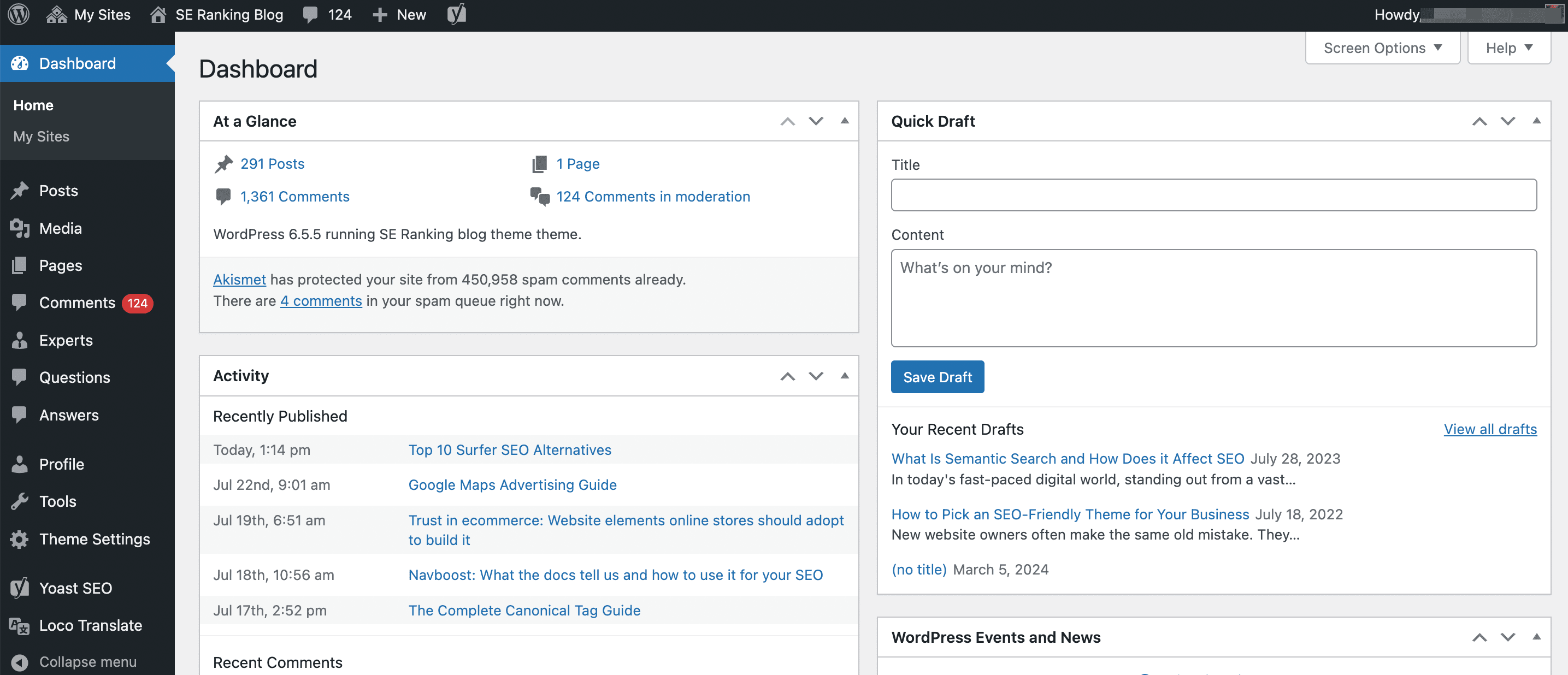
WordPress is believed to be a great CMS for SEO because it offers many valuable optimization features right out of the box. Its default installation enables you to set custom URLs, proper headings and image alt tags, but that’s it. Since WordPress is known for the sea of plugins available for it, you should be able to find some to manage your SEO with. Below are some of the more popular ones.
Yoast SEO is one of the most popular WordPress SEO plugins to date. It simplifies the process of setting canonical URLs or meta robots tags, enabling breadcrumbs, and tweaking your XML sitemap. It can also generate a robots.txt file for you. To manage more SEO settings, you’ll have to install more plugins.
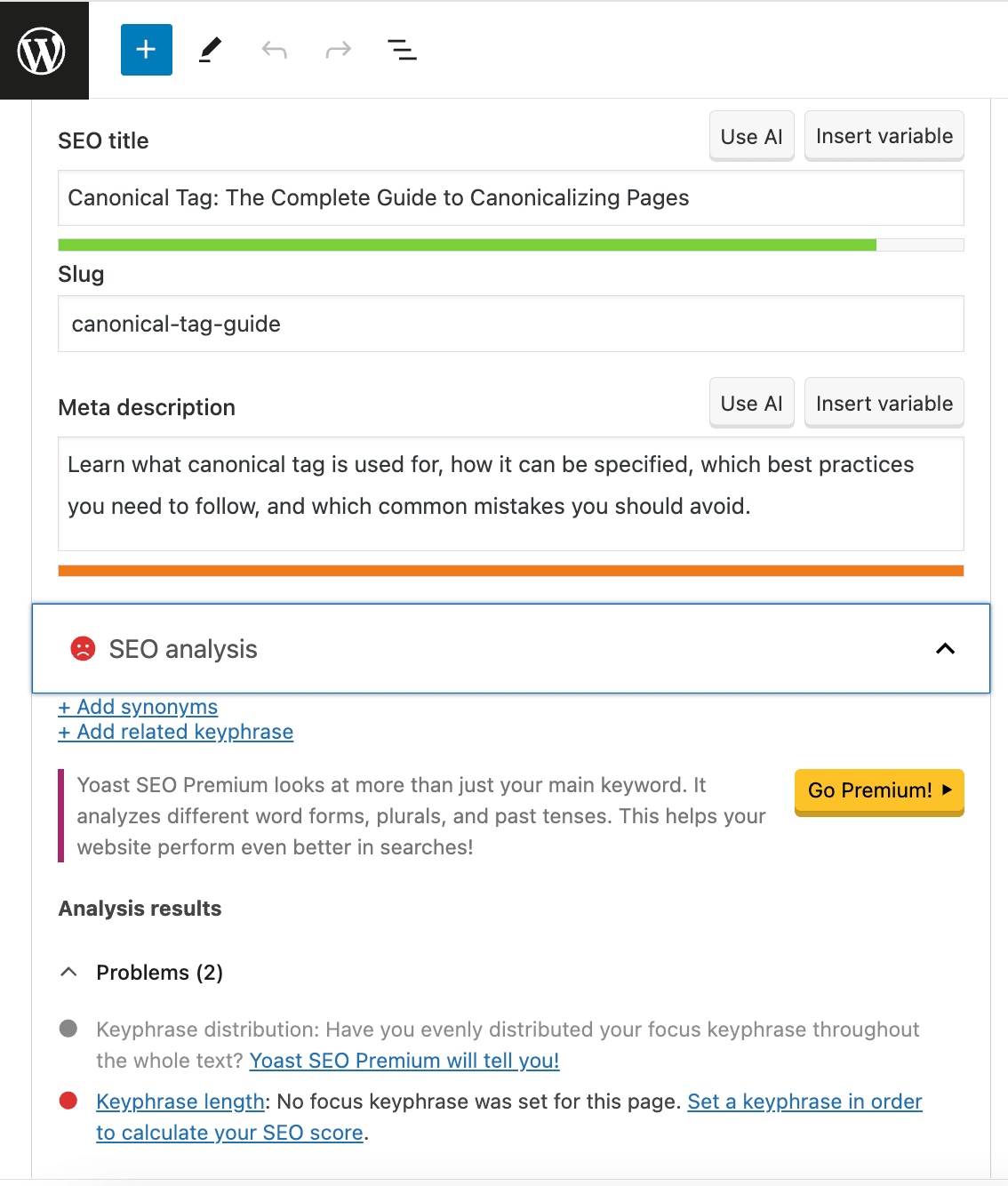
In addition to Yoast, you can also install the W3 Total Cache right away. It speeds up your WordPress site by caching pages. But there are a lot of other useful plugins out there, both free and paid. Just make sure to do your research before installing any as plugins can often pose risks to your site’s security and site speed.
WordPress advantages
- User-friendly, simple-to-use CMS. This makes it the ideal choice for beginners and for anyone who needs to create a website quickly.
- Offers thousands of themes and plugins, making website customization easy.
- Built-in SEO features for optimizing sites for search engines.
- Seamless access and usability across mobile devices.
- Large community of developers and users who are constantly creating new plugins and themes. This makes it easy to find support and resources.
- Build a fully functional site for less than $100, or even for free.
WordPress drawbacks
- Though regularly updated, hackers often target it and exploit it for negative SEO tactics. Hackers can use many themes and plugins to hijack your website.
- Installing too many plugins and extensions can cause page speed to decrease.
- No dedicated customer support.
Joomla — a scalable alternative to WordPress
Just like WordPress, Joomla is open-source and free. Joomla also provides themes and plugins, but it refers to them as templates and extensions. Joomla also isn’t as intuitive and easy-to-use as WordPress, making it a less ideal choice for newer SEOs.
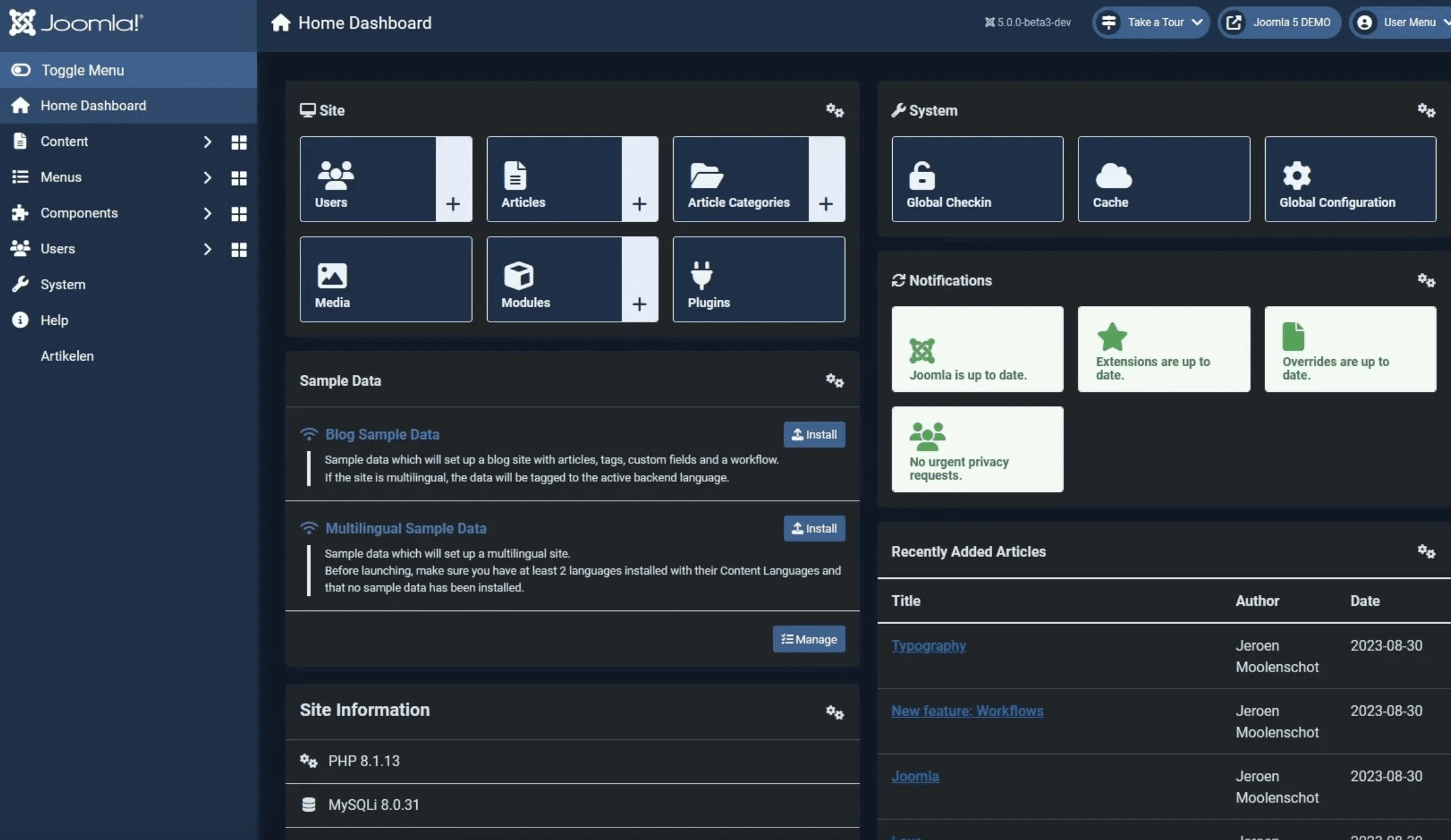
Joomla is ideal for larger websites that require organized menus, sections, and categories. It allows you to neatly organize website content without relying on extensions. Joomla also gives you the opportunity to use different template settings across the website.
You can easily set proper headings and add meta descriptions. It just takes a single click, but consider the SEO challenges described below before doing so. For one, Joomla offers dynamically-generated URLs that can be difficult to read, and you may encounter issues such as duplicate content and non-indexed images. The default robots.txt file instructs search engines not to index the image folder. You must manually edit the file to fix this issue.
To enable search engine-friendly URLs, you can tweak Joomla settings or install an extension.

Alternatively, you can use the sh404SEF extension. It can help you turn messy URLs into SEO-friendly ones, create meta descriptions, title tags, canonical tags, and set up redirects.
To add alt tags and create an XML sitemap, you’ll need separate extensions. You can find these in Joomla’s official store. The SEOFLI extension, for example, generates alt tags automatically.

On the plus side, Joomla, being one of the market leaders, is known for its speed. You can enable caching without installing any extensions. Also, optimizing Joomla for mobile is easy because most templates are mobile-friendly.
Joomla advantages
- Flexibility to mix and match different themes for different pages or website sections.
- Large library of extensions available with easy SEO tweaking functionality and no coding.
- Easy to create a fast-loading website, crucial for SEO and user experience.
- Hands-off caching, which further improves performance.
- Automatic gzip compression without needing an extension.
- Responsive templates by default.
Joomla drawbacks
- Its vast feature list and less intuitive interface may pose challenges for users transitioning from WordPress or other simpler website platforms.
- Manual installation of an SSL certificate is required.
- An extension is required to generate and submit XML sitemaps.
- Manual edits to the robots.txt file are required to enable crawling of images and other media.
Shopify — an intuitive hosted ecommerce platform
Shopify is the second most popular CMS. It is an intuitive and user-friendly hosted ecommerce platform that takes the hassle out of setting up online stores. It was founded in 2006 and has since evolved into one of the most popular ecommerce platforms in the world, with over 2 million daily active users.
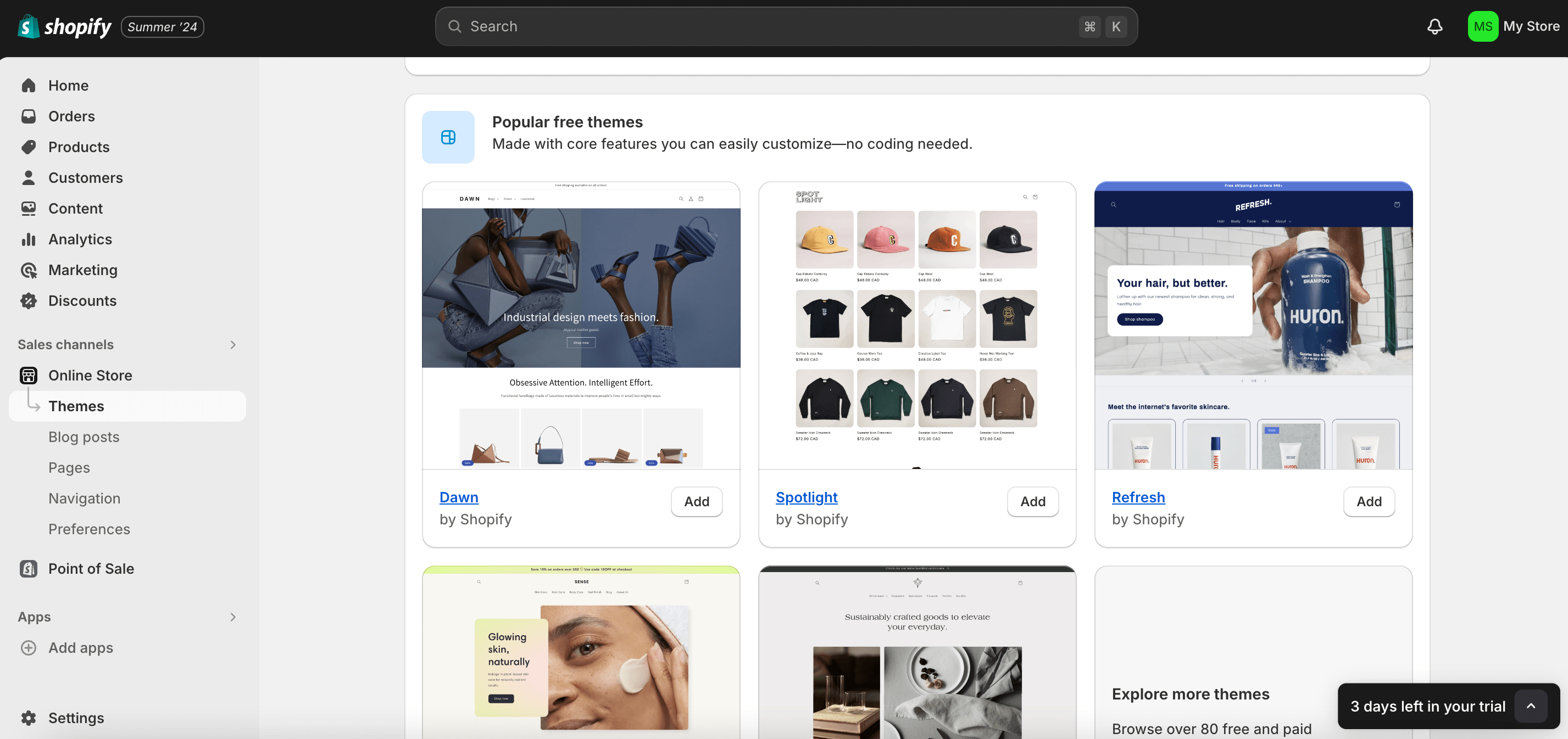
The default version makes it easy to add meta tags and alt tags. You can also format text with headings. It also lets you customize URLs, but the content type prefixes (such as /collections, /products, /pages or /blogs) cannot be changed.
When editing the URL of an existing page, you can create a redirect. Just tick a simple checkbox. As for canonical tags, Shopify generates them automatically, which is great, but auto generated tags won’t always point to the right URL.
Shopify also automatically generates an XML sitemap and a robots.txt file for you. Unfortunately, you’ll also have issues with these two because Shopify gives you limited control over their content. For one, you cannot remove any rules from the robots.txt file, despite being able to add additional ones. To edit an XML sitemap, you’ll have to find and install a plugin of your choice.
Now, let’s talk about site load speed and mobile optimization. As a hosted solution that uses CND technology, Shopify is really fast. On the other hand, its platform infrastructure does not allow for leveraging browser caching. As for mobile optimization, Shopify currently only accepts themes with a responsive layout.
Shopify advantages
- You don’t need to install additional plugins and risk slowing your site down.
- Shopify saves you time with its user-friendly and straightforward interface.
- Shopify automatically generates canonical URLs, robots.txt, and sitemaps for you.
- All themes in Shopify are responsive, which means your site will look great on any device.
- Pages load quickly in Shopify because it has an integrated CDN that speeds up page loading times.
Shopify drawbacks
- While Shopify automatically generates a sitemap and a robots.txt file, you can’t edit them directly in the tool.
- To ensure your site is indexed by search engines, a paid plan is required, starting at $32 per month. There is no free option beyond the trial period.
- Shopify limits customization of URLs, which limits optimization opportunities.
- Auto-generated canonical tags occasionally point to the wrong page.
OpenCart — decent CMS for online stores
OpenCart is an open-source, free-to-download, and highly customizable CMS, but it’s not as versatile as some of the more advanced CMSs out there. OpenCart was originally designed as a platform for eсommerce, making it perfect for people who want to create an online store. It’s not the best choice, however, for users aiming to launch a blog or another content-driven site.
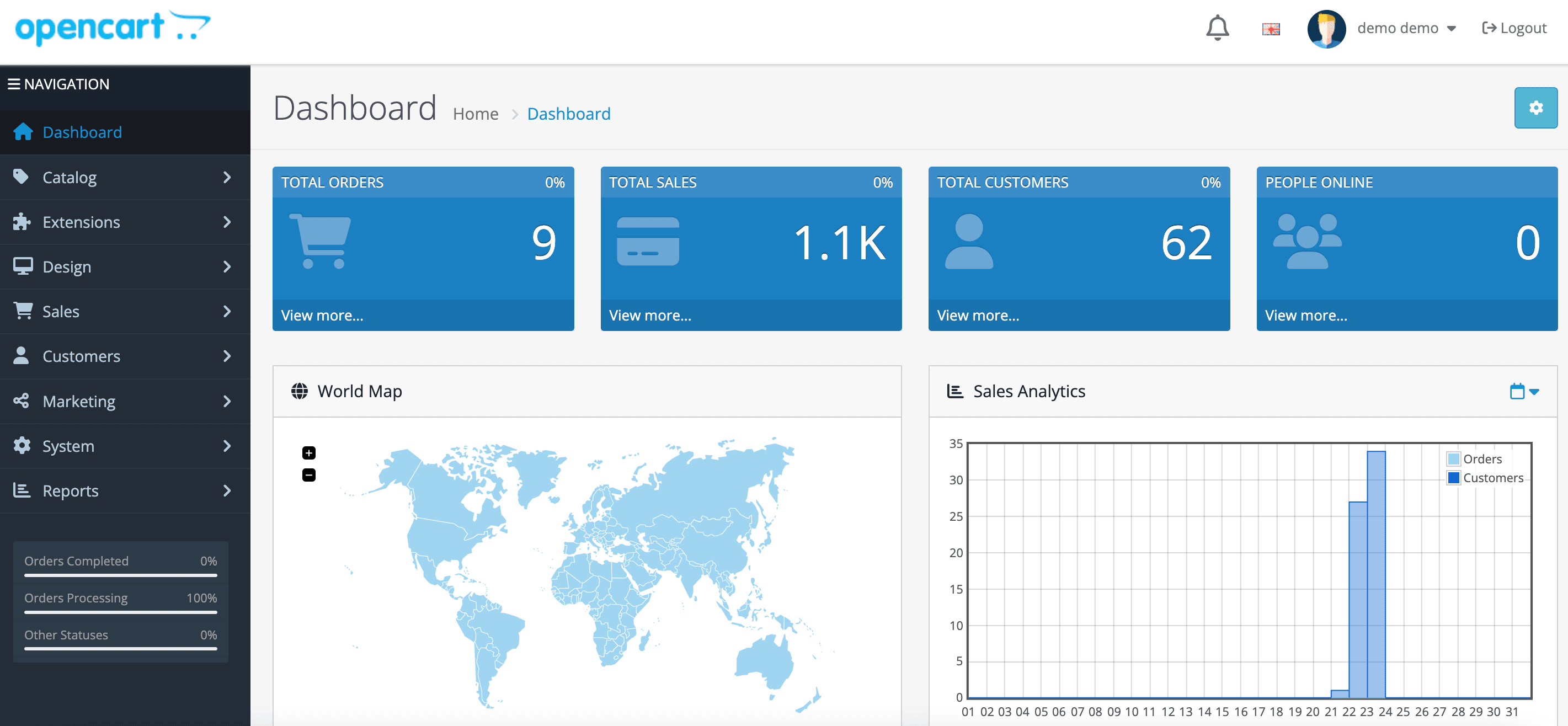
OpenCart currently powers 0.5% of all sites in the world, making it the third most popular ecommerce builder, trailing well behind Shopify and Adobe Commerce.
So, what do you need to create a website using OpenCart? Firstly, you will need a hosting plan, typically starting at around $5 a month, with higher-quality hosts incurring additional costs. After that, you’ll receive the standard online store functionality, which can be enhanced with modules and extensions. On the Extensions page, you’ll find a lot of commercial and free plugins. To find extensions relevant to SEO, you can filter your request in the search bar by using particular keywords.
Keep in mind that with OpenCart, installing additional modules for search optimization is not an option, but a necessity.
OpenCart advantages
- A unique SEO feature that lets you assign keywords to product pages and offers recommendations for improvement.
- EssentialSEO tools, including editable on-page elements, robots.txt file, and customized 404 pages.
- Flexible theme customization, positioning Opencart between Adobe Commerce and Shopify in terms of customization capabilities.
- A wide variety of ecommerce templates and designs.
- Support for multiple store functionality.
OpenCart drawbacks
- Manual installation of SSL certificate is required as Opencart isn’t self-hosted.
- Missing some SEO functions such as setting up 301 redirects, establishing canonical tags, modifying information without coding, or starting a blog without extensions.
- Page speed might be slow compared to other platforms, even with commercial plugins to improve caching and ignore unneeded JS and CSS.
- The inability to remove content type prefix from the URL can lead to canonicalization issues for SEO and the presence of duplicate pages.
- Creating SEO-friendly URLs can be challenging.
Adobe Commerce (Magento) — a customizable ecommerce CMS for tech-savvy users
Launched in 2008, Adobe Commerce (Magento) is currently one of the leading ecommerce CMSs. Initially, it was tailored to developers, so it isn’t possible to set it up properly without having a basic knowledge of coding. But if you want your store to expand, Adobe Commerce’s robust set of features and high level of customization can turn your website into an ecommerce powerhouse.
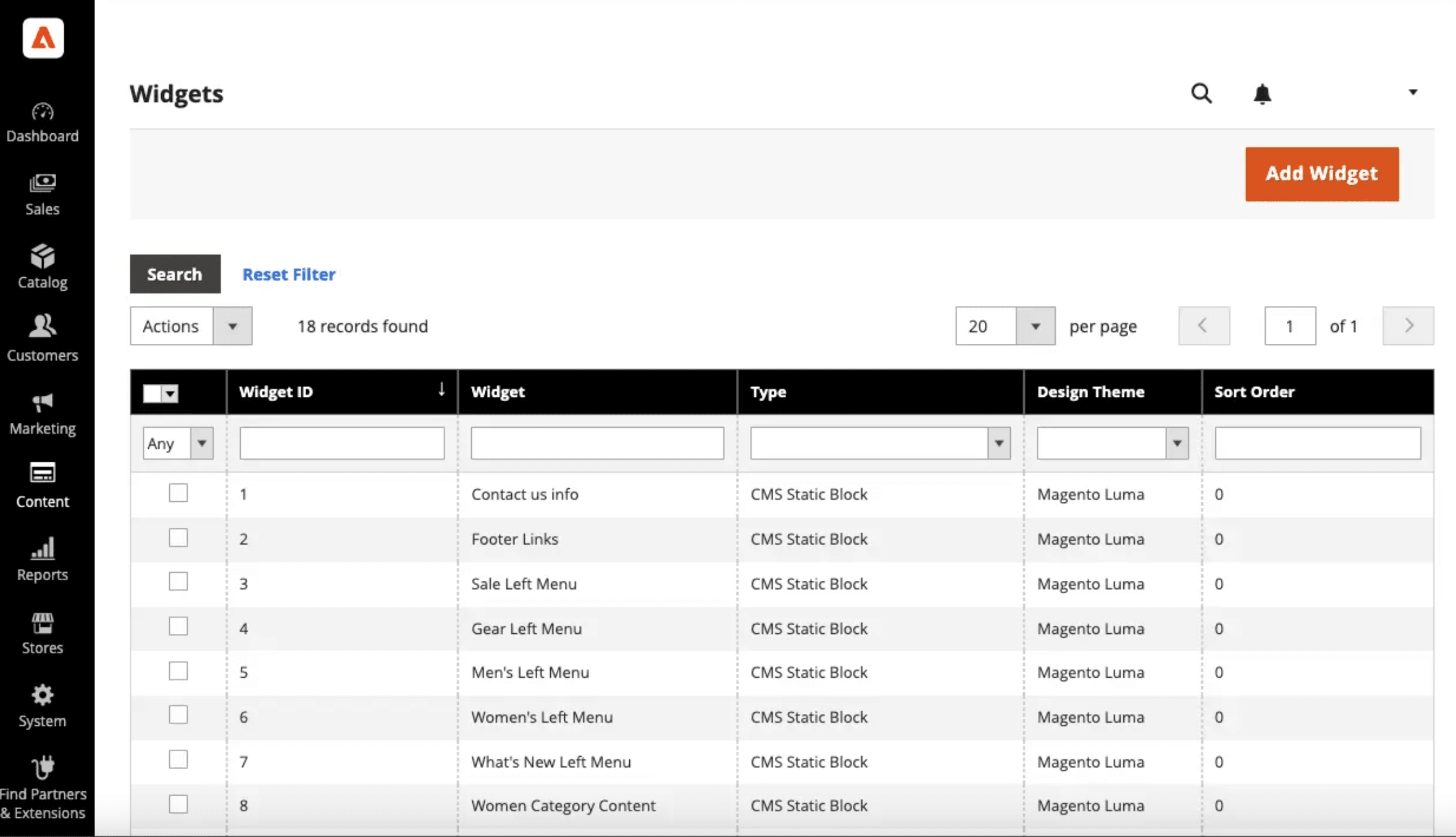
Adobe Commerce gives you the ability to handle large product catalogs, perform advanced order management, and create flexible pricing rules. It also offers a wide range of third-party integrations, such as payment gateways, shipping providers, and analytics tools, making it a versatile and scalable platform for any type of ecommerce business.
On the other hand, Adobe Commerce is complex and its advanced features come with a steep learning curve, which can be overwhelming for beginners or small businesses with limited resources.
Adobe Commerce also entails higher server requirements and hosting costs compared to other CMS options, which can end up being a significant investment.
Adobe Commerce advantages
- Extensive functionality: Adobe Commerce allows you to make various changes to your website’s layout, theme, content, and URL structure directly from the admin section.
- Canonical URLs: Built-in features in Adobe Commerce help prevent duplicate content and self-cannibalization issues by creating canonical URLs.
- Sitemap and Robots.txt: Adobe Commerce automatically generates an XML sitemap and robots.txt file.
- Integration marketplace: Adobe Commerce has a large integration marketplace that offers a range of SEO apps and tools for enhancing your website’s performance.
- Mobile-friendliness: Adobe Commerce is designed to be mobile-friendly, catering to the growing number of internet users accessing websites on mobile devices.
Adobe Commerce drawbacks
- Complex setup: Setting up Adobe Commerce can be challenging, especially if you don’t have experience with the platform.
- No built-in blog functionality: If you want to have a blog on your Adobe Commerce website, you’ll need to install an extension.
- H1-as-logo issue: Adobe Commerce has an issue where the logo is used as the H1 tag across the website, which requires coding to fix.
- High development cost: Depending on the system’s complexity, a website built on the Adobe Commerce platform typically costs $10,000 or more, which can be expensive for small businesses.
Drupal — an advanced technical solution for large websites
Drupal is a powerful and versatile CMS designed to handle large, complex websites. Its flexible architecture, advanced features, and scalability make it a popular choice among organizations in need of robust and technically advanced solutions. Drupal provides a wide range of modules and functionalities with different customizations and integrations. It can support virtually any website, making it a popular choice for individuals looking to create personal websites, ecommerce sites, and even portals and forums.
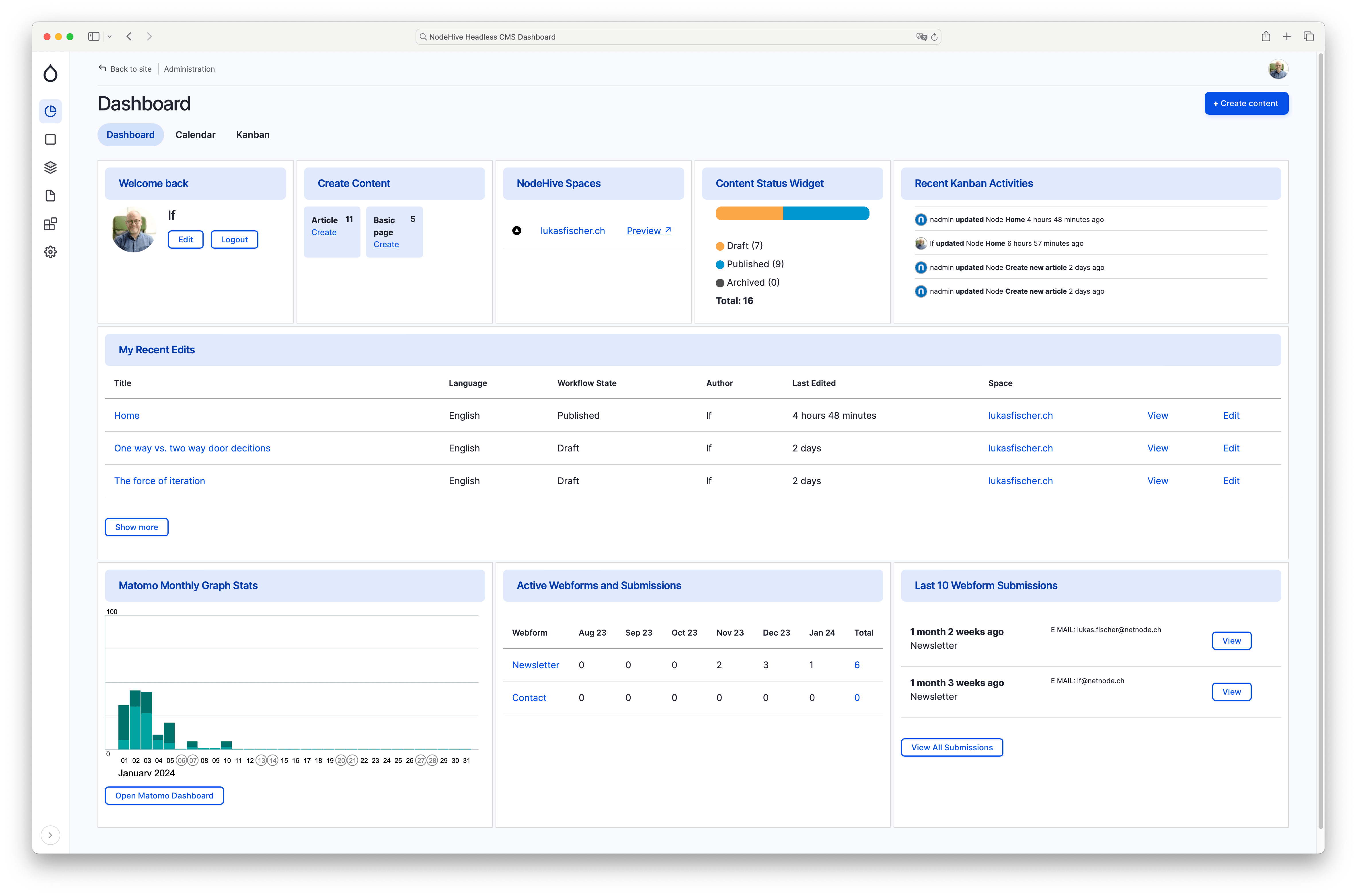
Drupal comes equipped with a variety of modules designed to enhance website functionality. These modules include content optimization, webmaster tools, link management, advanced tagging, keyword research, drag-and-drop functionality, competitor analysis, and integrated analytics.
Drupal’s key strengths are its competitor analysis and analytics integration capabilities. It also has user-friendly dashboards that seamlessly integrate with Google Analytics, providing a data-driven approach to website optimization. Drupal is also very SEO-friendly, making it an attractive option for anyone looking to improve their website’s search engine rankings.
Drupal advantages
- Advanced SEO capabilities, including keyword research and management, content tagging and autolinking, duplicate content alerts, metadata optimization, redirects, XML sitemap generation, and integration with Google Analytics.
- Advanced access controls and user permissions, allowing the creation of new roles with specific permissions.
- Built-in multilingual functionality in Drupal 10, enabling the creation and management of new languages directly within the admin interface.
- Stringent security, making it a popular choice for government institutions.
Drupal drawbacks
- Extra features and code in the back-end may slow down page load speed.
- Drupal’s technical complexity can pose challenges for users without coding experience.
- A smaller selection of modules and themes compared to other CMSs.
- Getting acquainted with Drupal can be challenging, particularly for inexperienced users.
HubSpot CMS — a versatile platform for your digital marketing needs
Launched in 2020, the HubSpot CMS has rapidly established itself as a powerful content management system, empowering businesses to effortlessly create and manage their digital content. Hubspot’s CMS is built with user-friendliness in mind and is accessible to businesses of all sizes. Users can easily create, publish, and update content without having technical expertise. The platform offers a diverse range of features, including customizable templates, intuitive drag-and-drop editing, and personalized content recommendations, enabling businesses to deliver outstanding user experiences.

HubSpot CMS offers a major advantage through its seamless integration with other HubSpot tools. By integrating with HubSpot’s CRM, marketing, and sales tools, businesses can manage their entire sales and marketing funnel in one place. This integration makes it easy for businesses to manage leads, automate marketing campaigns, and track site analytics. Additionally, HubSpot CMS integrates with third-party tools like Salesforce, Zapier, and Google Analytics, providing businesses with a comprehensive solution for managing their digital content.
Another key advantage of HubSpot CMS is its focus on SEO. The platform offers robust SEO features such as content optimization recommendations, customizable meta descriptions, and automatic sitemap creation. These features help businesses improve their search engine rankings and drive more organic traffic to their website. With HubSpot CMS, businesses can effectively optimize their content for search engines without the need for specialized knowledge or technical skills.
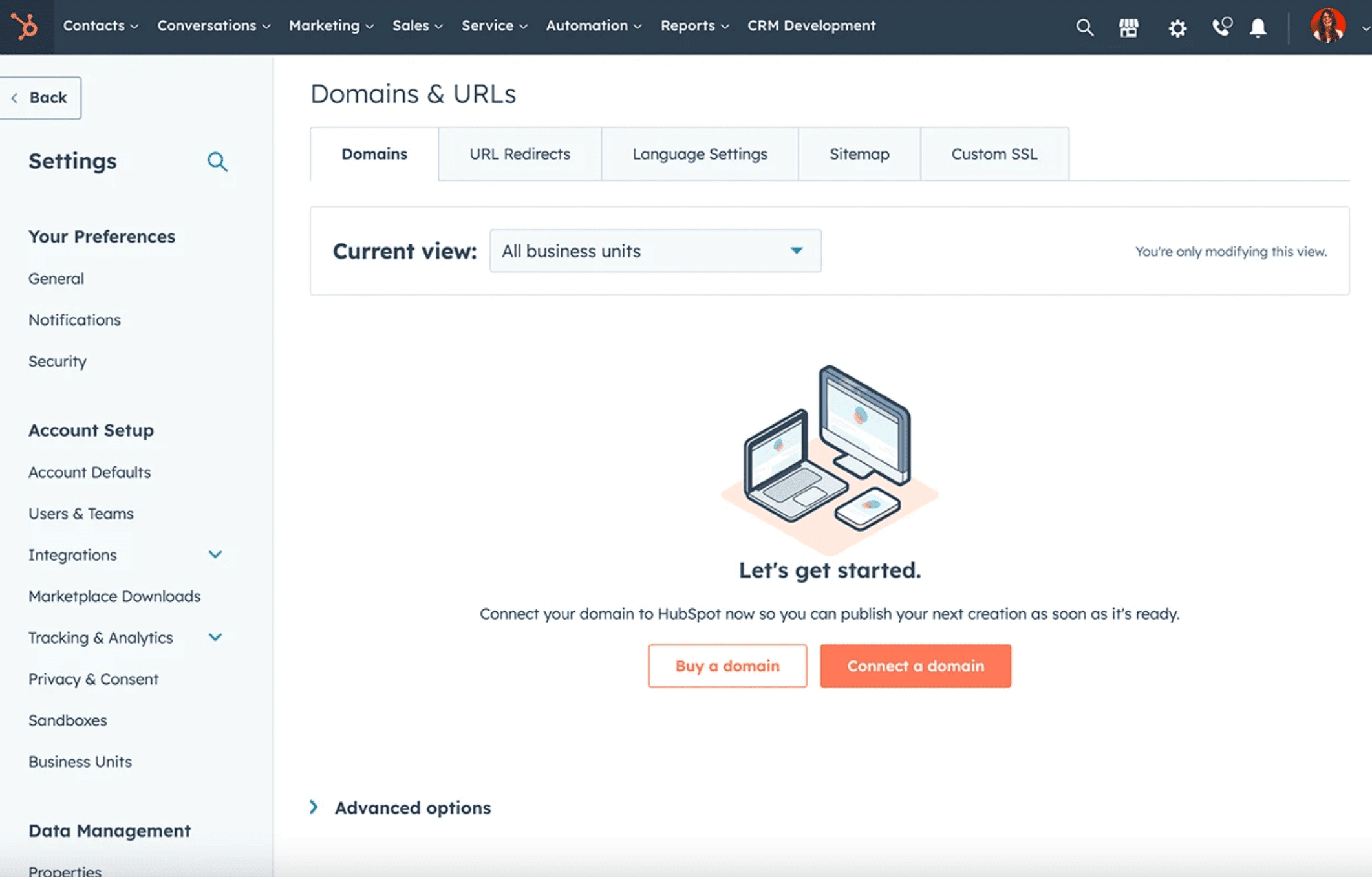
HubSpot CMS advantages
- Seamless integration with HubSpot’s CRM platform, including Marketing Hub, Service Hub, and Sales Hub, providing a cohesive marketing and sales experience.
- The CMS comes with an SSL certificate and auto-generated sitemap.
- Wide variety of SEO-friendly website themes.
- Google Search Console integration, inbound link tracking, and page performance stats, altogether providing an all-in-one solution for SEO and performance tracking.
- Comes with essential out-of-the-box SEO options and requires no third-party extensions or plugins.
- Robust support options, including a direct phone line and a knowledge base.
HubSpot CMS drawbacks
- No free version is available, but it offers a trial.
- Migration may take a lot of time depending on your previous CMS provider.
- Works best as a full-service solution.
Wix — the best CMS software for personal sites and small businesses
Wix is a popular CMS that provides both basic and premium solutions. It’s convenient drag-and-drop editor enables users to create, change, and grow websites without the need for coding expertise. It is an affordable platform, with its personal plans starting at $17 a month. Its basic business plans start at $36 a month. It serves as an all-in-one solution for entrepreneurs or small business owners with no coding experience, empowering them to design professional-looking websites with no need to hire a developer. But when it comes to SEO, how does Wix fair?

Well, if you are looking for an entry-level website builder, you won’t run through many roadblocks with Wix. It provides built-in SEO tools, eliminating the need to navigate through thousands of extensions. With Wix SEO Wiz, you gain access to a step-by-step tutorial that walks you through the basics of SEO, identifies any weak points in your site, and provides helpful tips for improving your search engine visibility.
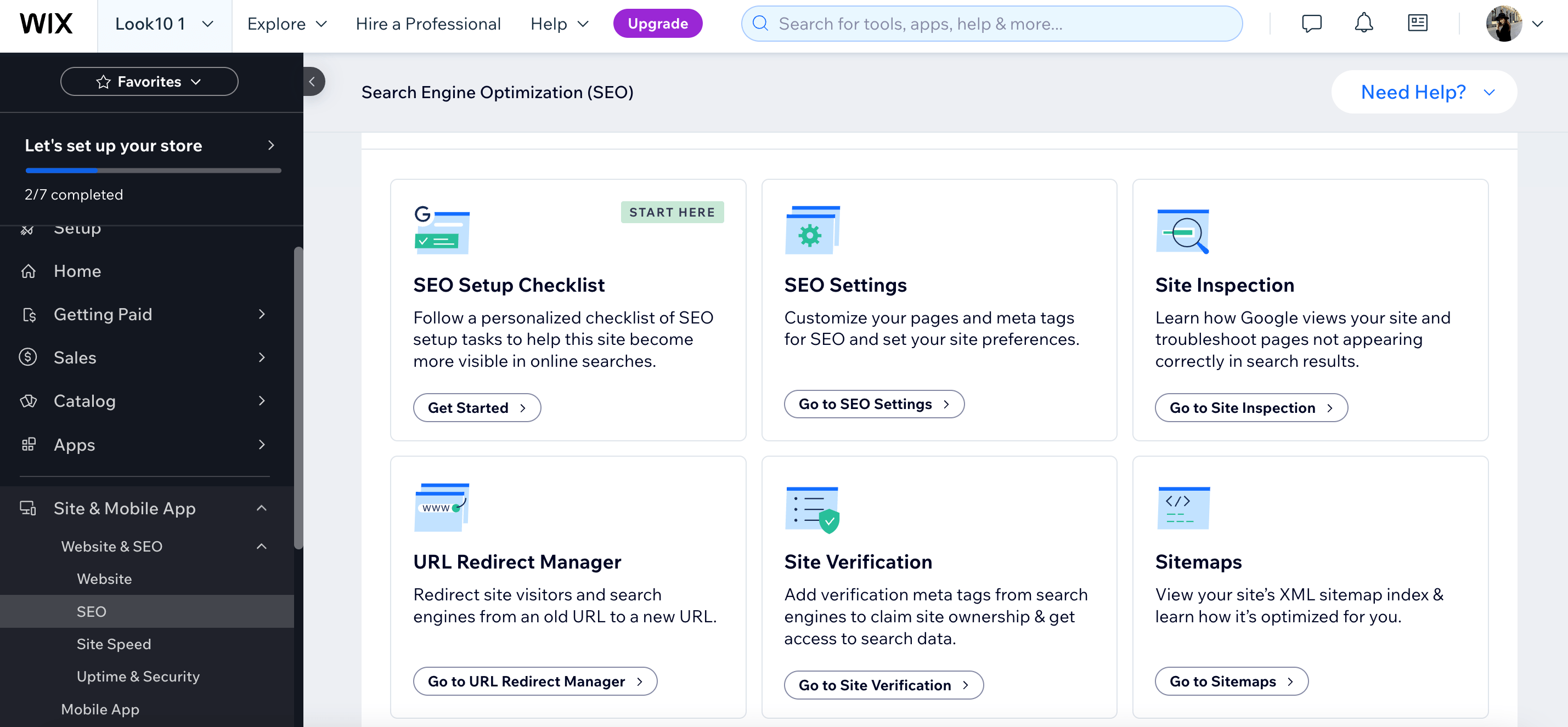
You can also use the SE Ranking app in Wix to work with keywords and analyze their main metrics. It even provides insights into your competitors’ SEO strategies, including their paid and organic campaigns.
On the other hand, Wix could stand to improve its multilingual SEO functionality. Currently, all languages share the same URL for each translated page, which can put you at a disadvantage.
Wix advantages
- Wix provides essential SEO features built into the dashboard, eliminating the need for additional extensions.
- Websites created with Wix are automatically SSL-protected.
- It creates XML sitemaps automatically and submits them to Google Search Console.
- The drag-and-drop interface is intuitive and easy to use, making it simple for beginners to create a website.
Wix drawbacks
- Loading speed can be slow, impacting user experience and search engine rankings.
- Changing the selected theme requires an entire site redesign.
- While Wix offers standard SEO capabilities, implementing advanced SEO tools may present challenges.
- The basic plan shows ads on users’ websites.
GoDaddy Website Builder — a simple yet effective CMS for small businesses
GoDaddy is widely known as a leader in domain name registration and web hosting. In addition to these core services, they also offer their own website building tool that uses Artificial Design Intelligence (ADI) to simplify and speed up the website creation process.
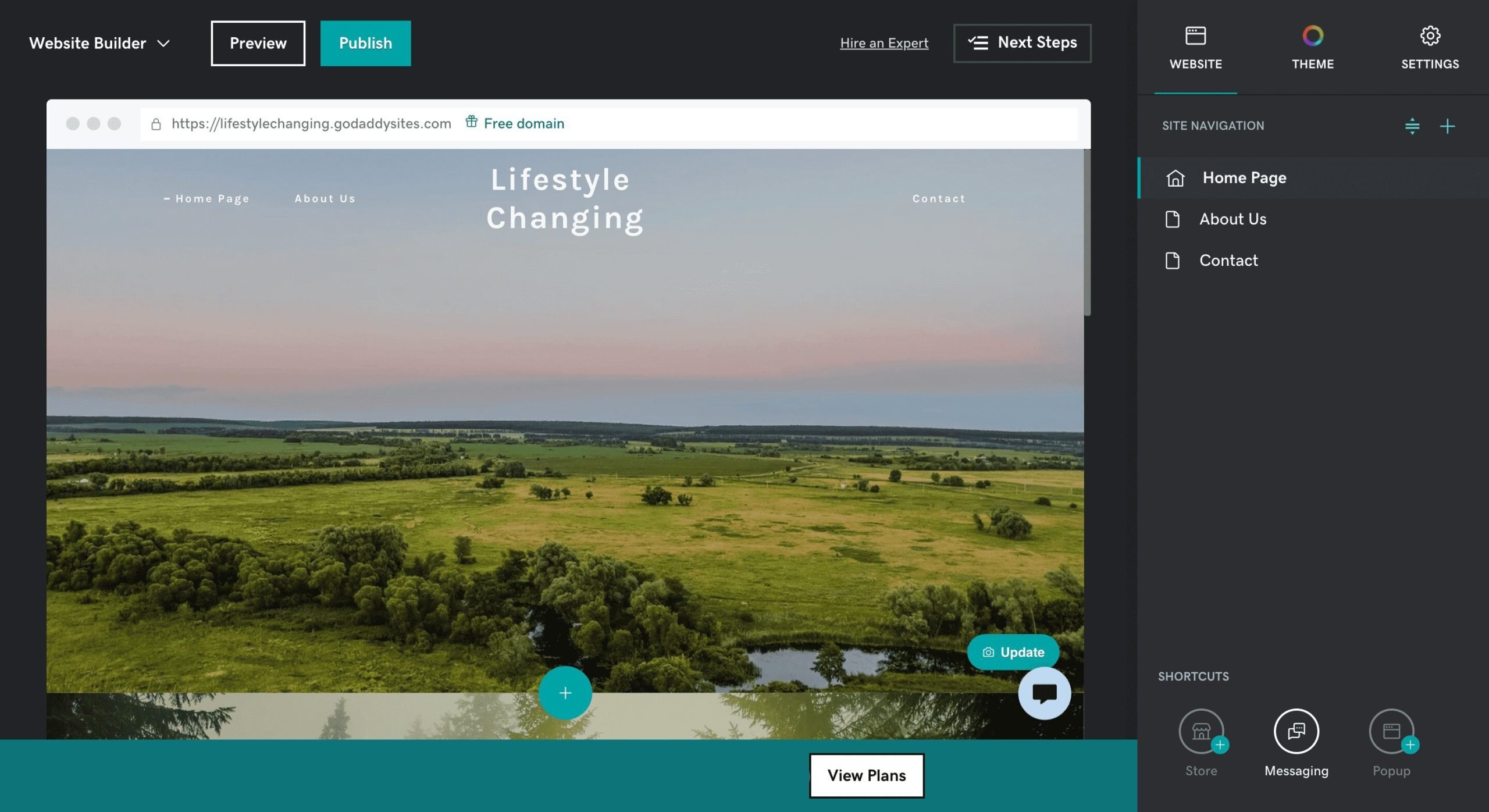
Using GoDaddy Website Builder is as simple as follows: select a template, edit it using the drag-and-drop editor, add content, and publish your site. As of now, no third-party apps, add-ons, or plugins exist for the GoDaddy website builder, which means you’ll only be able to use built-in features to create your website.
The main advantage of this tool is that you can create a nice looking and functional site with minimal effort and in a matter of minutes, even if you’re new to website building. While it offers simplicity, it lacks in terms of creativity and does not provide advanced options. Its customization options for themes and layouts are very limited. What’s more, if you’re looking for an advanced solution for scaling your website, GoDaddy Website Builder will not be of much help due to its limited depth in website building capabilities.
GoDaddy advantages
- GoDaddy’s Website Builder is straightforward and intuitive, which makes it a perfect fit for users who don’t feel tech savvy.
- By subscribing to GoDaddy, you also get access to other marketing tools like GoDaddy Appointments, GoDaddy Email Marketing, GoDaddy Social Media Marketing, GoDaddy Content Creator, and GoDaddy Connections.
- Fast loading speeds compared to its competitors.
- Optimized layouts for smartphones.
GoDaddy drawbacks
- Limited customization options for layouts.
- Not suitable for ecommerce, as the tool only offers basic features (checkout not hosted on your domain, no email receipt customization, poor tax & donation system).
- The templates are not as impressive or as professional as those offered by similar tools.
- This tool may not be suitable for complex sites or ambitious users looking to scale their businesses, as it lacks advanced SEO features.
Squarespace — the best CMS system for creativity
Over the past 20 years, Squarespace has become one of the most popular website building solutions in the market. With over 2 million users, this platform offers built-in ecommerce and marketing features tailored for photographers, bloggers, artists, and people looking to set up an online store with a small inventory.
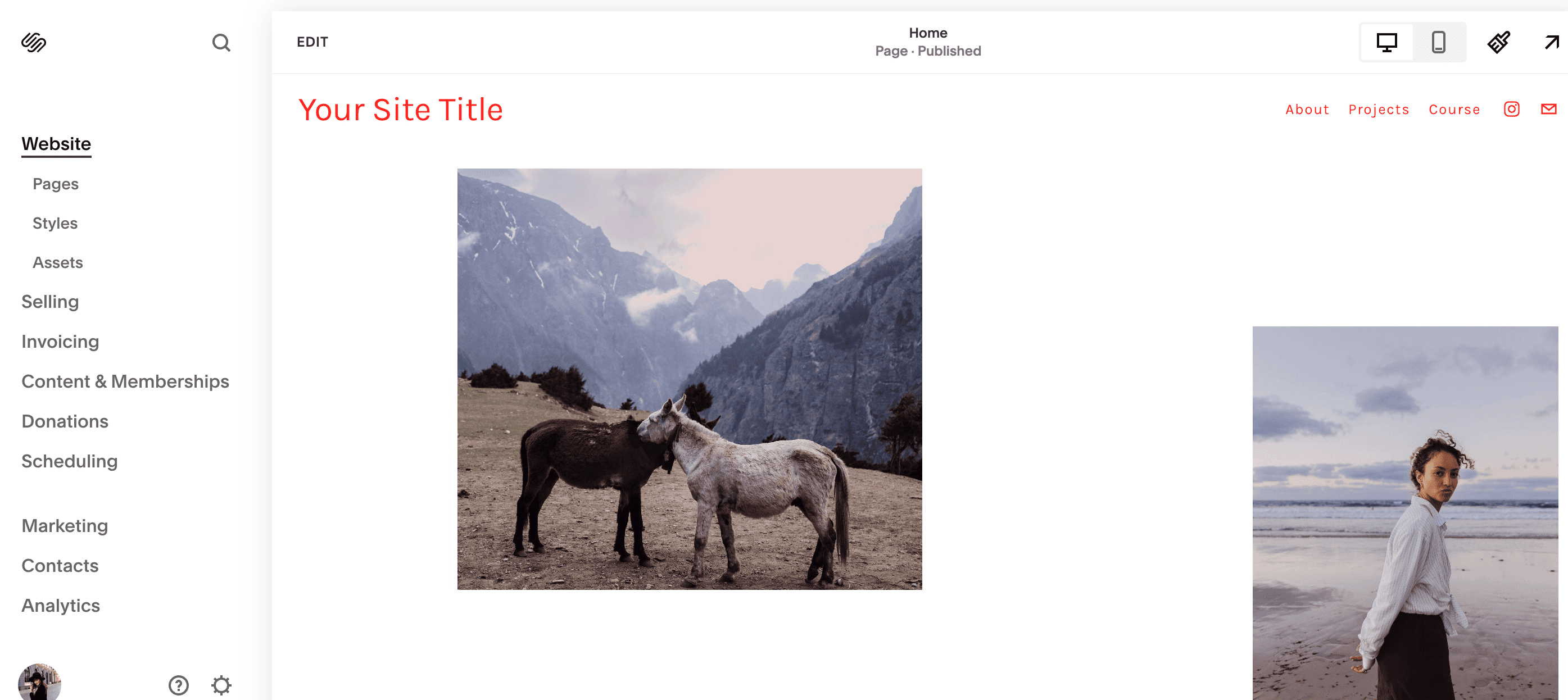
One notable feature of Squarespace is its blogging suite. Because of its variety of premade options, even users with no prior experience can easily create a blog. You can even manage your blog from any mobile device by integrating the Squarespace Blog App. This feature makes Squarespace the perfect choice for users on the go.
Squarespace is also widely recognized for its ability to create stunning portfolios, which can be attributed to its excellent selection of portfolio themes. When scrolling through this tool’s website, you’ll immediately notice the abundance of well-designed templates that provide plenty of space for images. You can use these templates to showcase your work and leave minimal distractions.
Finally, its combination of tools for social media marketing, email marketing, and SEO inspires small businesses to join the millions of other creators using Squarespace. Squarespace offers a selection of third-party integrations, including its tools for shipping management, product label printing, print-on-demand and more. This makes the process of building an ecommerce store as easy as it gets.
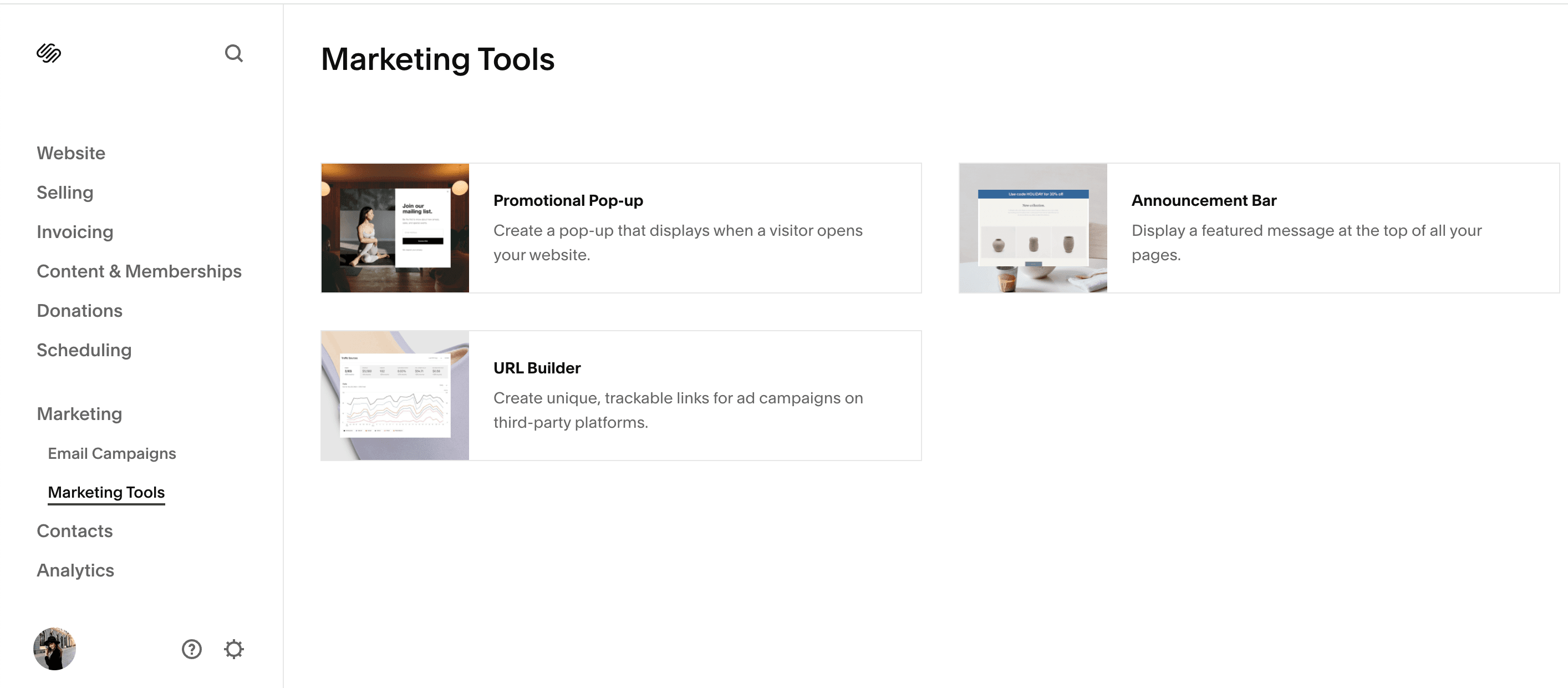
Squarespace advantages
- Wide selection of templates and designs.
- Comprehensive blogging feature.
- SSL included in all plans.
Squarespace drawbacks
- You can’t edit the sitemap or robots.txt files.
- It doesn’t support any plugins.
Adobe Experience Manager — a robust solution for blogging and content management
Adobe Experience Manager has been empowering marketers or developers to create high-performance pages since 2012. It merges content creation, marketing campaigns, and website performance tools into a single platform.
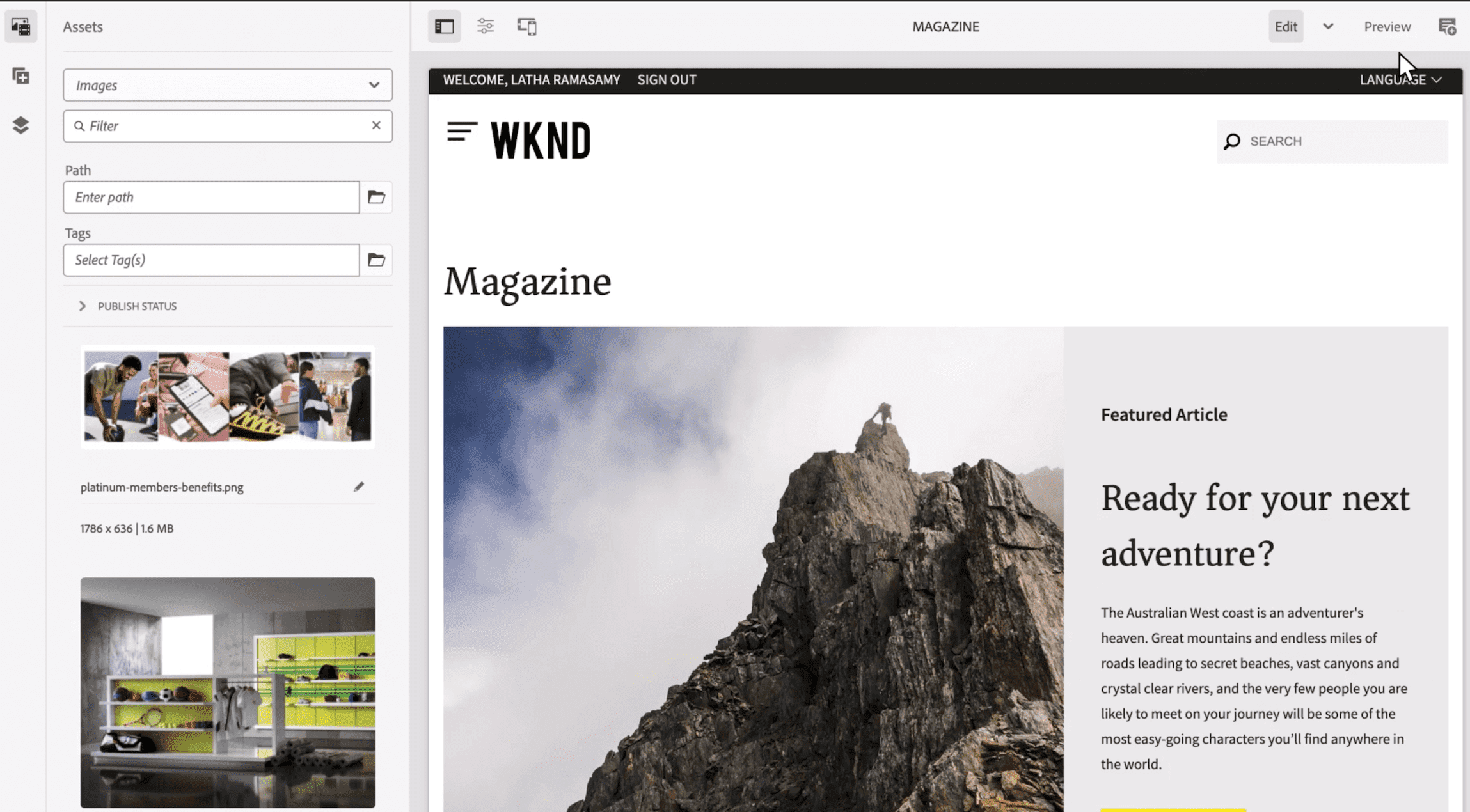
Adobe Experience Manager offers a wide range of valuable SEO tools and features to support even content-heavy sites. Some of these functionalities include Google Search Console verification, autofill metadata, and tagging. It also provides website performance metrics via Adobe Analytics.
Use this CMS to create SEO-friendly URLs, assign canonical tags, build an XML sitemap, create 301 redirects, include breadcrumbs, and use robots.txt files. You can also add meta descriptions and titles.
Adobe Experience Manager also provides an Edge Delivery Services feature designed to streamline the process of publishing website content, reduce latency, and enable faster loading times. The phased rendering algorithm ensures that the most prominent parts of each page load first. This results in better SEO, higher page-load speeds and improved rankings overall.
You can even create different experiments with the platform to figure out what brings more traffic and clicks.
Adobe Experience Manager advantages
- Create informational, SEO-optimized, and quality content with its user-friendly drag-and-drop editor and blog feature.
- Various built-in tools (vanity URLs, XML sitemaps, breadcrumbs, etc.) and multiple add-ons.
- Analytics and user web page tracking.
Adobe Experience Manager drawbacks
- Although the vendor doesn’t provide pricing information, its estimated cost is high compared to other CMSs.
- Lack of built-in templates and themes.
- Onboarding can take several months. This isn’t ideal if you need a website up and running right away.
Conclusion
The CMS you choose can make the difference between SEO success and SEO failure. The best website CMS for SEO ultimately depends on the goals you set.
Regardless of the CMS you choose, we highly recommend that you run a website audit after the set up phase. This will ensure that all the plugins/modules work properly. It can also give you and understanding of how well you addressed each potential SEO pitfall. SE Ranking’s Website Audit software can help you identify errors ranging from website speed to URL rewriting and canonicalization issues. The tool comes with a 14-day free trial.

